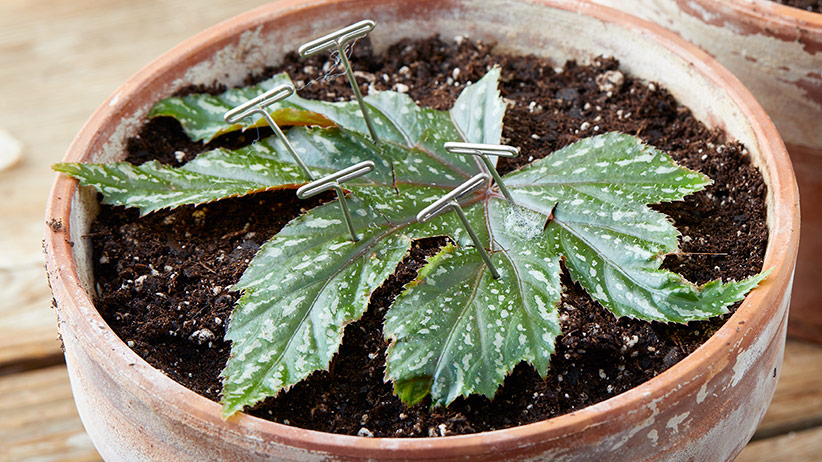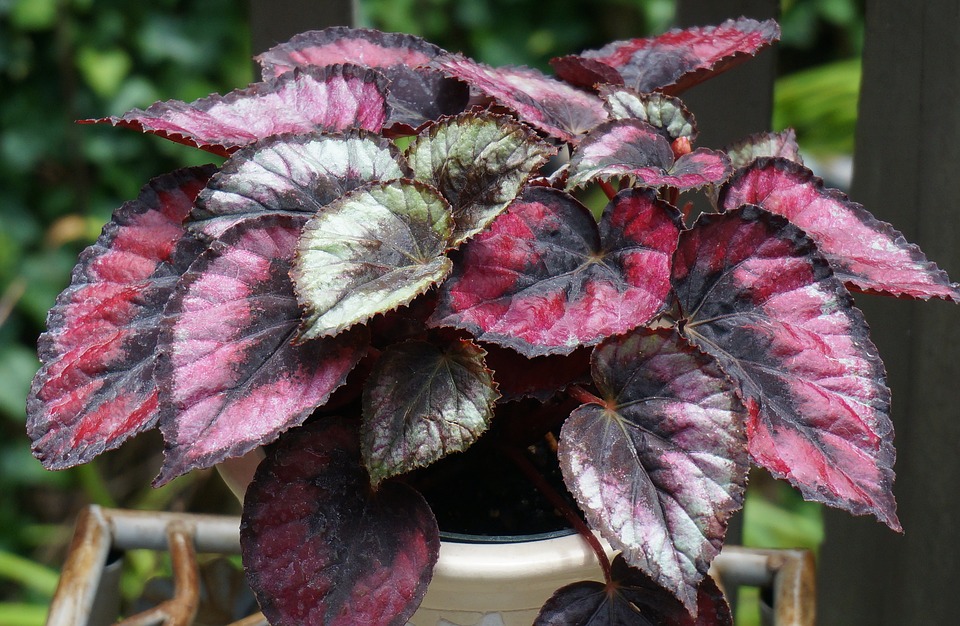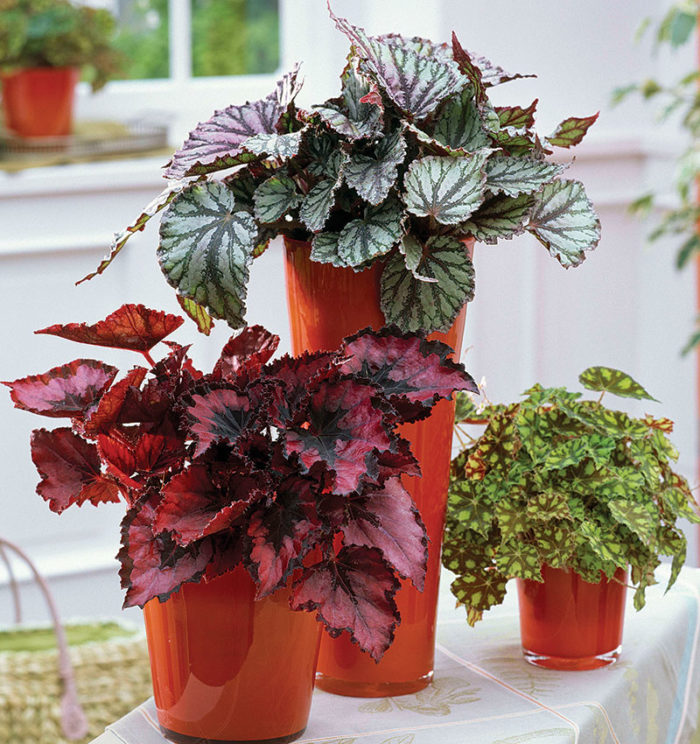Rex Begonia Care Guide
How to Grow & Care for the “Queen of Foliage Plants”
Introduction to Rex Begonias
Rex Begonias (Begonia rex-cultorum) are prized for their spectacular foliage rather than their flowers. These rhizomatous plants feature uniquely patterned leaves with intricate designs in vibrant colors ranging from silver, green, purple, red, pink, and even metallic hues.
Native to the forests of eastern Asia, Rex Begonias have been extensively hybridized, resulting in thousands of captivating cultivars. They make stunning houseplants and can add a dramatic flair to outdoor container gardens in the warm seasons.
Quick Facts:
- Also known as: Painted-leaf Begonias, Fancy-leaf Begonias
- Growth habit: Rhizomatous, clumping
- Height: Typically 12-18 inches
- Width: 12-24 inches
- USDA Hardiness: Zones 10-12 (best grown as houseplants)
:max_bytes(150000):strip_icc()/grow-rex-begonia-1902492-5-94396a6711614886a9bfbbca7e6a9306.jpg)
Light Requirements
Rex Begonias thrive in bright, indirect light. The proper light balance is crucial to maintaining their vibrant leaf colors while preventing leaf burn or color fading.
Ideal Light Conditions:
- ✓ Bright indirect light – A north or east-facing window is perfect
- ✓ Morning sun – Can tolerate gentle morning sunlight
- ✓ Filtered light – Through a sheer curtain if near a south/west window
Avoid:
- ✗ Direct afternoon sun – Causes leaf scorch and color fading
- ✗ Deep shade – Results in poor growth and dull coloration
Light Intensity Signs:
Too Much Light
- Bleached or faded leaf colors
- Brown, crispy leaf edges
- Leaf curling
Just Right
- Vibrant, colorful foliage
- Healthy new growth
- Leaves facing toward light source
Too Little Light
- Dull, darkened foliage
- Leggy, stretched growth
- Reduced leaf size
Watering Requirements
Rex Begonias require consistent moisture but are susceptible to root rot if overwatered. The goal is to keep the soil evenly moist but never soggy.
Watering Guidelines:
- → Water when the top 1-2 inches of soil feels dry to the touch
- → Water at the base of the plant, avoiding the leaves
- → Use room temperature water, as cold water can shock the roots
- → Reduce watering in winter when growth slows
Pro Tip:
Rex Begonias are sensitive to chlorine and fluoride in tap water. Use filtered, distilled, or rainwater if possible, or let tap water sit out overnight before using.
Recognizing Water Issues:
Signs of Overwatering:
- Yellowing leaves that feel soft or mushy
- Moldy soil surface
- Rotting stems at soil level
- Fungus gnats hovering around the plant
Signs of Underwatering:
- Crispy, brown leaf edges
- Drooping leaves that don’t recover after watering
- Curling leaves
- Stunted growth
- Soil pulling away from the pot edges
Seasonal Watering Schedule
| Season | Frequency |
|---|---|
| Spring/Summer (Growing) | Every 5-7 days |
| Fall (Transitional) | Every 7-10 days |
| Winter (Dormant) | Every 10-14 days |
*Adjust based on your specific home conditions and plant needs
Soil Requirements
Rex Begonias have fine, delicate root systems that require well-aerated, light soil that retains moisture but provides excellent drainage.
Ideal Soil Characteristics:
- • Well-draining yet moisture-retentive
- • Light and airy texture to promote root growth
- • Slightly acidic pH between 5.7 and 6.4
- • Rich in organic matter for nutrients
DIY Rex Begonia Soil Mix Recipe:
- 3 parts peat moss or coco coir
- 2 parts perlite
- 1 part vermiculite
- 1 part compost or worm castings
- Optional: small amount of horticultural charcoal
Mix all components thoroughly until well blended. The soil should feel light and spongy.
Potting & Repotting Tips:
Choosing the Right Container
- Use a shallow, wide pot rather than a deep one
- Ensure pot has adequate drainage holes
- Glazed ceramic or plastic pots help retain moisture
- Choose a pot only slightly larger than the root ball
Repotting Guidelines
- Repot in spring or early summer when actively growing
- Rex Begonias prefer to be slightly root-bound
- Repot every 1-2 years or when roots emerge from drainage holes
- Handle roots gently during transplanting
- Water lightly after repotting and place in indirect light
Commercial Alternatives:
If you prefer not to mix your own soil, these options work well:
- African violet potting mix
- Indoor plant mix with extra perlite added
- Premium potting mixes like Pro-Mix, Sunshine Mix, or Fox Farm
Humidity & Temperature
Rex Begonias originate from humid tropical forests and require higher humidity than typical household levels. Maintaining proper humidity is crucial for their health.
Humidity Requirements:
- ✦ Ideal humidity: 50-60% or higher
- ✦ Minimum: 40% (will survive but may not thrive)
Ways to Increase Humidity:
Humidifier
Most effective method; place near plants but not directly on foliage
Pebble Tray
Set pot on tray of pebbles with water below pebble level
Grouping Plants
Cluster plants together to create a microclimate
Plant Terrarium
Enclosed or partially enclosed environment traps humidity
Important: Avoid misting Rex Begonia leaves directly. This can lead to fungal problems and leaf spotting. Focus instead on raising ambient humidity.
Temperature Requirements:
Ideal Range
65-75°F
(18-24°C)
Minimum
60°F
(15°C)
Maximum
80°F
(27°C)
Temperature Considerations:
- Keep away from cold drafts from windows or doors
- Avoid placing near heating vents or radiators
- Protect from sudden temperature fluctuations
- If outdoors, bring inside when temperatures drop below 60°F
Signs of Humidity/Temperature Issues:
Low Humidity Problems
- Crispy, brown leaf edges
- Curling leaves
- Leaf drop
- Stunted growth
Temperature Stress Signs
- Too cold: Drooping leaves, slowed growth, leaf drop
- Too hot: Wilting despite moist soil, scorched leaf edges
Propagation Methods
Rex Begonias can be propagated in several ways, with leaf cuttings being the most popular method. Propagation is best done in spring or early summer when the plant is actively growing.
Leaf Cutting Method (Most Common)

Select a healthy, mature leaf with vibrant coloration.
Cut the leaf with a clean, sharp knife, including 1-2 inches of leaf stem (petiole).
Turn the leaf upside down and make small cuts along the main veins with a sharp knife.
Place the leaf right-side up on moist propagation mix, ensuring good contact.
Secure the leaf by placing small stones or pins around the edges to maintain contact with soil.
Cover with clear plastic to create high humidity and place in bright, indirect light.
Keep soil consistently moist. Small plantlets will emerge from cut veins in 4-6 weeks.
Stem Cutting Method
Cut a 2-3 inch stem section with at least one leaf and node.
Remove lower leaves if present, leaving 1-2 leaves at the top.
Place cutting in moist propagation mix or water (water propagation is slower but allows you to monitor root development).
Maintain high humidity with a clear plastic cover or bag.
Roots should develop in 3-4 weeks. Plant in regular potting mix once roots are 1-2 inches long.
Division Method
Gently remove the mature plant from its pot during repotting.
Identify natural divisions in the rhizome (the thick stem that grows horizontally).
Carefully separate sections, ensuring each division has roots and leaves.
Plant each division in a separate pot with fresh potting mix.
Keep soil moist and provide high humidity until established.
Propagation Tips for Success:
- Use a lightweight, sterile propagation mix to prevent disease
- Maintain temperature between 70-75°F (21-24°C) for optimal rooting
- Be patient – Rex Begonias can take longer to root than other plants
- Avoid fertilizing until new growth appears
- Gradually reduce humidity once plants are established
Common Problems & Solutions
Rex Begonias can be somewhat finicky plants, but understanding common issues will help you keep your plant looking its best. Here are the most frequent problems and how to address them.
Common Pests
Mealybugs
White, cotton-like clusters on stems and leaf undersides.
Treatment:
- Remove visible bugs with alcohol-dipped cotton swab
- Spray with insecticidal soap or neem oil
- Repeat weekly until eliminated
Spider Mites
Tiny moving dots and fine webbing, yellowing leaves.
Treatment:
- Increase humidity to discourage mites
- Wipe leaves with damp cloth to remove mites
- Apply neem oil or miticide
- Isolate affected plants
Aphids
Small green, black, or red insects clustering on new growth.
Treatment:
- Rinse off with gentle stream of water
- Apply insecticidal soap
- For severe infestations, use systemic insecticide
Common Diseases
Powdery Mildew
White powdery spots on leaves that spread rapidly.
Treatment:
- Improve air circulation around plant
- Reduce humidity temporarily
- Apply fungicide specifically for powdery mildew
- Remove severely affected leaves
Root Rot
Wilting despite moist soil, yellowing leaves, mushy stems at soil level.
Treatment:
- Unpot plant and inspect roots
- Trim away black, mushy roots with clean scissors
- Repot in fresh, well-draining soil
- Adjust watering practices
Leaf Spot
Brown or black spots with yellow halos on leaves.
Treatment:
- Avoid wetting leaves when watering
- Remove affected leaves
- Apply copper-based fungicide
- Improve air circulation
Other Common Issues
Leaf Curling
Causes: Low humidity, temperature stress, pests
Solution: Increase humidity, move away from drafts or heat sources, check for pests
Leggy Growth
Causes: Insufficient light, overfeeding
Solution: Move to brighter location (but not direct sun), reduce fertilizer
Sudden Leaf Drop
Causes: Environmental shock, temperature change, relocation stress
Solution: Stabilize environment, maintain consistent care, give time to adjust
Preventive Care:
- Inspect new plants before bringing them home
- Quarantine new plants for 2-3 weeks
- Regularly check leaf undersides and stems for early signs of pests
- Clean leaves periodically with damp cloth to remove dust
- Avoid overcrowding plants to maintain good air circulation
- Use preventive neem oil treatments monthly during growing season
Popular Rex Begonia Varieties
With thousands of cultivars available, Rex Begonias offer an incredible diversity of leaf patterns, colors, and textures. Here are some of the most stunning and popular varieties to consider for your collection.

Rex Begonia ‘Escargot’
Known for its dramatic spiral pattern that resembles a snail shell (escargot). Features dark green leaves with silver bands following the spiral.
Care level: Moderate
:strip_icc()/Begonia-rex-Curly-Fireflush-4oTqHfj-K2r8CgOi5x8KUG-26008b10e099444e81d617d8a91c6e5d.jpg)
Rex Begonia ‘Fireworks’
Striking variety with reddish-purple leaves featuring bright pink spots and splashes. Dramatic and vibrant coloration.
Care level: Moderate to high

Rex Begonia ‘Red Kiss’
Features deep burgundy leaves with metallic silver edging and centers. One of the most popular and striking varieties.
Care level: Moderate
:max_bytes(150000):strip_icc()/grow-rex-begonia-1902492-5-94396a6711614886a9bfbbca7e6a9306.jpg)
Rex Begonia ‘Silver Queen’
Predominantly silver leaves with dark green edges and veins. Creates a bright accent in shaded areas.
Care level: Easy to moderate

Rex Begonia ‘Jurassic Silver Point’
Part of the Jurassic series with large pointed leaves featuring silver centers and dark edges with pink undertones.
Care level: Moderate

Rex Begonia ‘Marmaduke’
Features large, rounded leaves with a unique combination of pink, silver, and green coloration in a swirling pattern.
Care level: Moderate to high
Begonia Collections and Sources
Rex Begonias are popular collector plants, and there are several specialty nurseries and sources that offer rare and unique varieties:
- Logee’s Greenhouses – Specializes in Rex Begonias with over 25 varieties
- Steve’s Leaves – Offers a rotating collection of unusual varieties
- Botanical gardens with begonia collections – Many offer plant sales
- American Begonia Society – Resources for collectors and specialty sales
- Local plant swaps and garden club events
Final Tips for Success
Seasonal Care Adjustments
Spring & Summer (Growing Season)
- Increase watering frequency as needed
- Apply diluted fertilizer every 2-4 weeks
- Monitor for pests more frequently
- Perfect time for propagation
Fall & Winter (Dormant Period)
- Reduce watering frequency
- Stop fertilizing or reduce to monthly
- Move away from cold windows
- Maintain humidity levels
Rex Begonia Success Checklist
- ✓ Position in bright indirect light, avoiding direct afternoon sun
- ✓ Maintain high humidity (50-60%) with humidifier or pebble tray
- ✓ Water when top 1-2 inches of soil feels dry, avoid overwatering
- ✓ Use well-draining, lightweight soil with good aeration
- ✓ Fertilize with balanced, diluted fertilizer during growing season
- ✓ Keep temperatures between 65-75°F (18-24°C)
- ✓ Regularly check for pests and disease
- ✓ Repot every 1-2 years in spring with fresh soil
Frequently Asked Questions
Are Rex Begonias toxic to pets?
Yes, all begonias contain soluble calcium oxalates that are toxic to cats and dogs if ingested, causing irritation and vomiting.
Why are my Rex Begonia’s leaves losing color?
Most likely due to too much direct sunlight or insufficient nutrients. Move to a location with bright indirect light and apply diluted fertilizer.
Can Rex Begonias grow outdoors?
They can be placed outdoors in warm seasons in partial shade, but must be brought indoors when temperatures drop below 60°F (15°C).
Do Rex Begonias bloom?
Yes, they produce small pink or white flowers, but they’re typically grown for their foliage rather than flowers.
Display Ideas
- Group with other humidity-loving plants for a tropical display
- Place in decorative ceramic pots to complement leaf colors
- Use as centerpiece in a coffee table terrarium
- Create a begonia collection with different varieties
- Showcase on a plant stand where their colorful leaves can be admired from above
This Rex Begonia care guide was created as an informational resource for plant enthusiasts.
Remember that each plant is unique and may require adjustments to care based on your specific environment.






